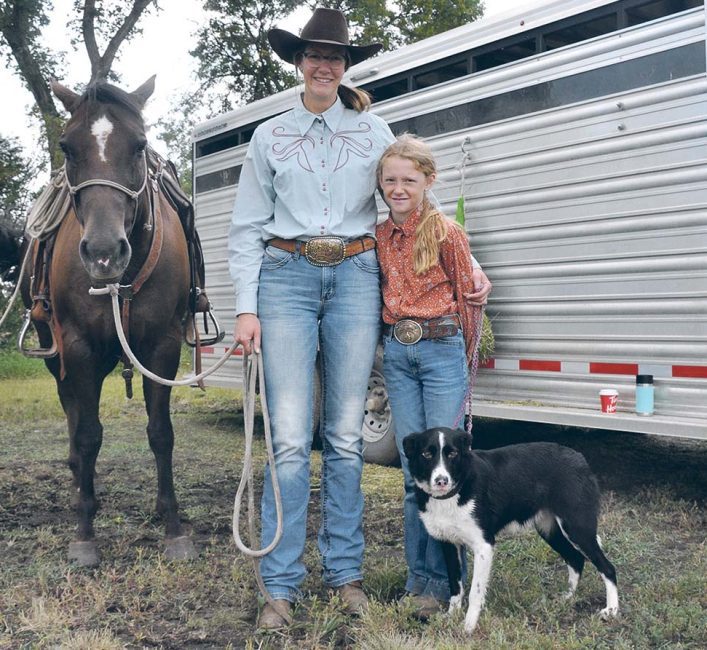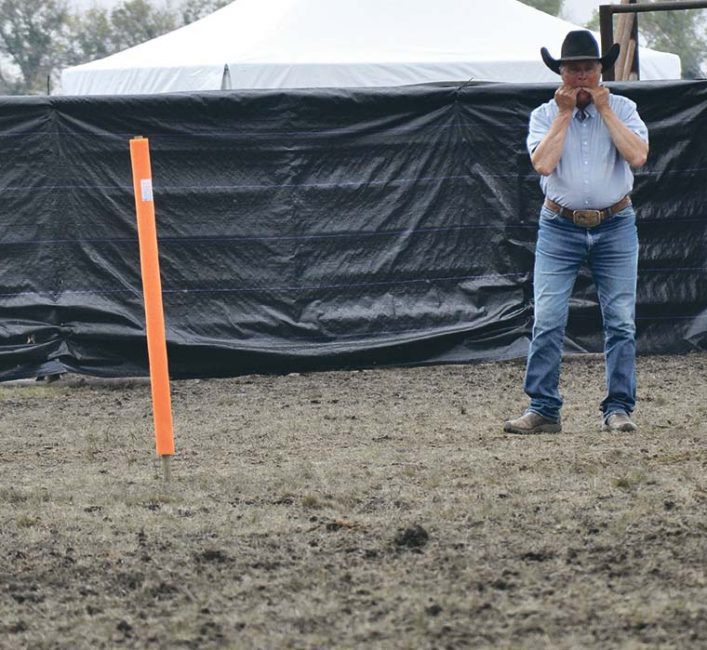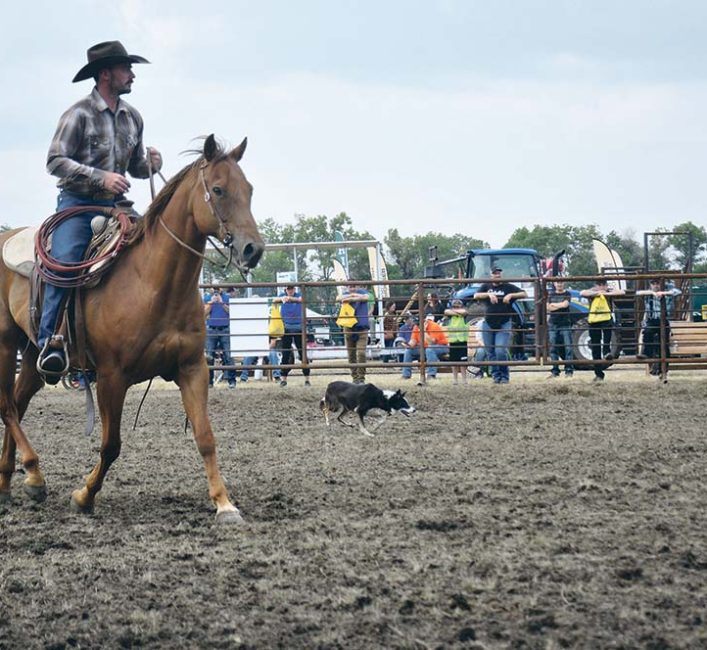Public given the opportunity to see cattle dogs and their owners in action during trials held as part of a recent farm show
Every ranch might have a dog or two hanging about but those who put them to work handling cattle swear by their abilities and as a time- and cost-saving exercise.
Judging by the popularity of the cattle dog event debut at the Ag in Motion farm show, the working dogs may have created some converts to their value.

Alicia Adamson, along with her Border Collie Grace from Makwa, Sask., said using dogs for cow herd management isn’t much different than their traditional use for sheep.
“It’s very similar. The stock just dictates how you handle them. Different sheep can be different and different cattle can be different,” she said. “I just look at them as all stock and just read them as individuals. Whatever comes out is what you work with.”
Read Also

Canadian Food Inspection Agency slammed for handling of bovine tuberculosis case
The federal government leans heavily on producers to “take one for the team” and risk their livelihoods without any reassurance of support.
Cattle are bigger and less flighty than sheep when it comes to how handling is approached, while sheep require more precision from the dog.

Adamson said her ranch operates with about 800 yearlings along with 700 cow-calf pairs and a backgrounding operation. The ranch has eight dogs to help move stock.
“There is always work for the dogs,” she said, adding she keeps eight Collies of various ages and abilities at the ranch.
“They are a lot smarter than you would think and often you’ll see in the trials they are very specific, very trained and it’s like you are controlling inches of movement,” she said. “But at home, so often when just left on their own and just shown a direction, they can just cover for you and figure out we need to cover from here to here, push that direction and just sort of spread out and do it.”
The dogs can be competitive with each other as well when multiple Collies are working a smaller herd, said Adamson.
“They’re all work once they’re working, they aren’t fighting each other. Just sometimes they try to outwork each other,” she said.

When it comes to judging, Dale Montgomery of Maple Creek, Sask., said he’s looking for confidence in the dogs during trials, which see three head of cattle moved through three obstacles around a 75 by 50 metre pen.
“I want a dog with lots of confidence and what we call power, nerve,” said Montgomery, who trains dogs for work with both cattle and sheep. “You’ve got the confidence to walk up on something and make them move. If they don’t move them, they might have to bite them but I don’t like a dog that has a lot of bite in them. That tends to get the stock too riled up.”
Some cattle just aren’t intimidated by a 40-pound dog, he said.
“So, a dog has to have confidence to walk up to a 1,400-pound cow and maybe give him a bite in the nose and make him turn but some cows are tough to move.”
And it takes training on the handler’s part to ensure dogs don’t get too aggressive with the cows.
“But once you put the time in, they get pretty handy,” said Montgomery.
McCord, Sask., rancher Kirk Mastad competed with his Border Collie, Dex, and said he wouldn’t go without a working dog on his operation.
“We use a dog like an extra person or two or three people. Dogs can get under fences and get to places a guy on horseback can’t get,” he said. “The cattle respect dogs better than they respect anything else because it’s something dogs are made for. They understand pressure and release.”
While dogs pay for themselves in financial terms, they require a lot from their owners.
“It’s a commitment. It’s a full-time commitment. It’s not like a tractor that you can just turn off. You need to work it. The dogs need work so, if you don’t have enough work for them, they start making work themselves and that turns a lot of people off a good working dog,” he said.
This was the first time the cattle dog competition has been held at the Ag in Motion show held near Saskatoon July 18-20. It’s expected to return next year.
















